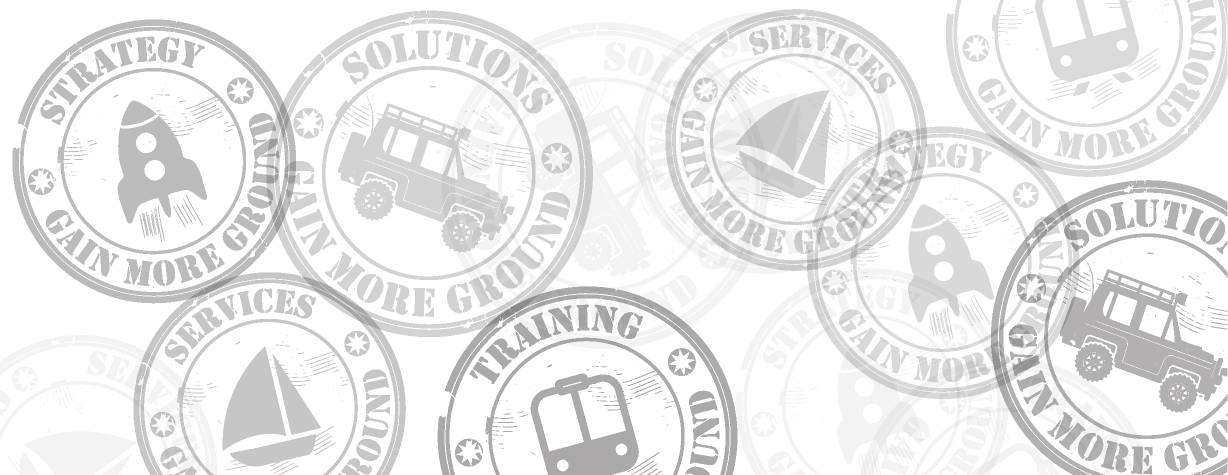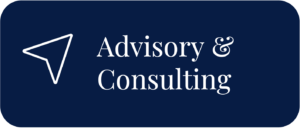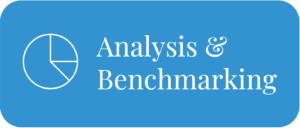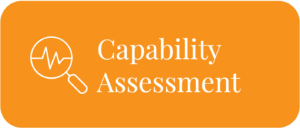In a room full of confident voices, the one with the facts leads.
At a time when CFOs are scrutinising spend, CMOs are chasing agility, and CIOs are under pressure to deliver transformation at scale, procurement has a unique opportunity: to be the unifying force that drives clarity, action, and alignment, powered by data.
But not just any data. Procurement data analytics, when done right, gives leaders the visibility to resolve conflict, the precision to allocate resources wisely, and the insight to turn uncertainty into strategic advantage.
This article explores how mastering procurement analytics positions you not just as an operational expert, but as an executive influencer.
The C-Suite Is Divided. Procurement Can Be the Bridge.
Conflicting perspectives in the C-suite are nothing new. What’s changed is the complexity of the decisions at hand, driven by market volatility, ESG mandates, digital disruption, and rising customer expectations.
Here’s where misalignment often appears:
- Strategic direction: Competing priorities across growth, risk, and innovation
- Resource allocation: Tensions over who gets budget and where to cut
- Performance metrics: Disagreements on which KPIs actually matter
- Risk tolerance: Divergent views on how far, fast, or cautiously to move
- Culture and compliance: Especially in the wake of ESG and regulatory shifts
Amid this friction, procurement holds something incredibly valuable: verifiable, cross-functional data, on suppliers, spend, risk, compliance, performance, and opportunity. But only if it’s translated into insights that resonate at the executive level.
What Procurement Analytics Brings to the C-Suite Table
This isn’t about reporting spend. It’s about reframing procurement as a driver of strategic impact. Here’s how:
1. Clarity: Resolving Conflicts Through Objective Procurement Data
When tensions flare around metrics or resource allocation, procurement data analytics offers a neutral foundation for decision-making. It helps execs:
- Compare supplier performance across business units
- Understand total cost of ownership, not just unit price
- Quantify trade-offs between resilience, cost, and ESG
In boardrooms where everyone has an opinion, being the one with trusted data earns influence.
In any boardroom, conflict isn’t dysfunction, it’s the byproduct of competing priorities.
- The CFO wants cost control.
- The COO wants operational resilience.
- The CMO needs agility to move fast in the market.
- The Chief Risk Officer is pushing for ESG compliance and supplier transparency.
- Meanwhile, the CEO needs to align all of it with long-term strategy and shareholder expectations.
The problem? Each function arrives at the table with its own version of reality, its own data, metrics, and interpretation of what matters. Without a neutral source of truth, debates become circular. Decisions get delayed. Trade-offs become personal.
Spend data analysis gives the organisation a shared lens.
Clarity is currency in the C-suite. Objective data cuts through opinion. It’s how executives resolve tension and move forward with confidence, because they’re working from the same set of facts.
This is where procurement can be so much more than a sourcing function.
Procurement data analytics offers a unique and often under-leveraged perspective
It sits at the intersection of cost, risk, resilience, and supplier performance. It captures not just spend, but behaviour, how the business actually operates on the ground.
Why it matters:
- For the CPO: This is your chance to lead, not follow. You’re not just reporting “what we spent,” you’re illuminating how decisions play out commercially across the supply base. You become the voice of data-backed trade-offs.
- For the board: Procurement insights help de-risk strategy. By quantifying ESG exposure, modelling inflation sensitivity, or showing the ROI of supplier consolidation, procurement becomes the source of truth behind complex decisions.
Because in a boardroom of opinions, the CPO who brings verifiable, cross-functional data earns the right to influence strategy, not just implement it.
2. Alignment: Using Procurement Data to Unify Metrics Across Functions
Disagreement often stems from different definitions of success.
Procurement analytics can harmonise metrics across Finance, Operations, and Risk by:
- Standardising classification and taxonomy (no more “miscellaneous”)
- Creating shared dashboards that align procurement activity with business KPIs
- Surfacing leading indicators that drive lagging financial outcomes
Spend Data Classification: The Root of Semantic Misalignment
One of the most persistent challenges in executive decision-making is semantic misalignment, when different functions use the same words but mean completely different things.
- Finance wants to reduce “cost,” but they’re referring to budget variance.
- Operations wants to reduce “cost,” but they’re talking about operational downtime.
- Risk sees “cost” as exposure: fines, non-compliance, or reputational damage.
This creates friction, not because anyone is wrong, but because everyone is measuring something different.
“Performance”, Efficiency” and “Cost” can mean different things to different stakeholders
Without a shared definition of performance, alignment becomes nearly impossible. Decisions get lost in translation. Metrics don’t ladder up. And the board starts to see reporting as noise, not clarity.
Spend Categorisation Techniques That Build Cross-Functional Trust
Unified metrics aren’t just operational, they’re cultural.
They create shared language, shared accountability, and the foundation for truly cross-functional collaboration.
Procurement has the tools, and the vantage point, to become a metrics harmoniser.
Here’s how procurement analytics becomes the bridge:
- Standardising classification and taxonomy: No more “miscellaneous” spend that means different things in every report. Procurement can create a common language across regions, systems, and categories.
- Shared dashboards, not siloed reporting: Procurement can connect purchasing behaviour to enterprise KPIs, linking cost-to-serve with margin, supplier performance with customer outcomes, and contract compliance with financial forecasting.
- Leading indicators: Because procurement has early visibility into market shifts, supplier instability, and cost drivers, it’s often the first to spot trends that will hit the P&L months later.
Procurement Data Analysis in Action: A Risk Alignment Example
A CPO worked with Finance and Risk to develop a shared procurement risk index, which flagged upstream exposure to a supplier facing ESG litigation, enabling the board to act before it became a material issue.
Why Procurement Strategies Need Aligned Data
For the CPO: This is about building bridges, not just between data sources, but between agendas. You position procurement as the connective tissue between functions, helping the organisation think, speak, and act with shared clarity.
For the board: Aligned metrics de-risk reporting. They signal maturity. And they make it easier to drive decisions based on performance, not politics.
3. Speed: Powering Agile, Informed Decision-Making when Using Procurement Data Effectively
Why Procurement Data Analysis Matters at the Speed of Business
Markets move fast. Disruption is the norm.
Executives are being asked to make high-stakes decisions with less time, more scrutiny, and higher expectations.
The board wants foresight, not hindsight.
But speed without clarity is chaos. And clarity without speed is irrelevance.
What boards and executive teams need is informed agility: the ability to scenario-plan, model trade-offs, and move quickly, without sacrificing confidence in the decision.
This requires data that is not only accurate, but immediately available, relevant, and contextual. Static reports don’t cut it anymore. Spreadsheets delivered two weeks too late are operational liabilities.
From Reactive to Real-Time: The Value of Spend Analysis Best Practices
This is where procurement can quietly become a speed engine for the business.
Why? Because procurement sits upstream. It sees disruption before it hits operations. It senses cost pressures before they appear on the balance sheet. It detects risk before it turns into crisis.
With the right tools, especially AI-enabled platforms that Purchasing Index offers procurement can:
- Model cost scenarios as supplier prices shift
- Flag risk exposure based on early warning indicators
- Run real-time comparisons across supplier performance, delivery times, ESG compliance, and total cost of ownership
- Inform trade-off decisions between price, speed, and risk in weeks, not quarters
Why Procurement Data Analytics Becomes a Strategic Enabler
For the CPO: This is your opportunity to redefine your value. You’re not the last to act, you’re the first to see. By enabling speed, you earn a seat at the table where the real-time decisions get made.
For the board: Procurement insight delivered at pace builds confidence. It reduces reaction time. And it turns what used to be slow-moving categories, like indirect spend or supplier risk, into levers of agility.
4. Influence: Earning Trust and Leading Change with Procurement Insight
In the boardroom, data is important, but influence moves decisions.
And influence doesn’t come from speaking the loudest.
It comes from consistently showing up with credibility, clarity, and timing.
The leaders who move organisations forward are the ones who translate complexity into action, bring evidence to emotion-led debates, and build trust across functional lines.
But here’s the catch: change doesn’t succeed without trust. And trust doesn’t scale without proof.
In an era where transformation is constant, digital programs, ESG mandates, cost reviews, M&A, the board is looking for leaders who can not only recommend change, but lead others through it. That means having the evidence, the relationships, and the narrative to bring others with you.
Procurement is often viewed as operational. Transactional. Tactical. That perception limits its influence.
But when the spend analysis process becomes a strategic lever, not just an operational one, procurement earns a new role: catalyst of change.
Procurement Analytics > Insights > Trust
When procurement data analytics is used to drive stakeholder engagement, through trusted insights, not just policy enforcement, procurement earns influence beyond its remit.
Here’s how:
- Evidence builds trust: When business units see that procurement insights are accurate, relevant, and reflective of their reality, they start listening.
- Insights shift mindsets: Showing stakeholders how their buying behaviour impacts the enterprise, on cost, risk, ESG, or performance, creates new conversations.
- Storytelling enables buy-in: Procurement can translate analytics into narratives that make the case for change. Whether it’s rationalising suppliers, shifting categories, or adopting new sourcing models, stories backed by data stick.
For the CPO: Influence is your leadership currency. Procurement has the data to drive change, but only if it’s deployed with empathy, timing, and strategic storytelling. Data earns attention. How you use it earns trust.
For the board: Procurement-led change isn’t about policy, it’s about progress. When procurement becomes a trusted partner to the business, transformation accelerates. Resistance drops. Strategic initiatives stick.
5. Resilience: Navigating Risk and ESG Through Procurement Data Insights
Procurement Data Analytics as a Risk and ESG Enabler
Resilience used to mean having a backup plan. Today, it means having built-in adaptability, across your supply chain, your operating model, and your stakeholder reputation.
From geopolitical instability to climate risk, from regulatory shifts to activist investors, the bar for governance has been raised. Boards are now judged not just by growth, but by how well they anticipate, absorb, and respond to disruption.
Resilience is no longer a siloed function, it’s a board-level mandate. And yet, many organisations still manage ESG and risk as reactive compliance functions, not proactive strategic levers.
What’s missing? Insight at the point of decision.
Procurement Spend Data Analysis: Making Risk Visible
Procurement sees what few others do: the reality behind the supply base.
Who you buy from, how they operate, where they’re exposed, and how that flows through to your brand, balance sheet, and boardroom.
Modern procurement data analytics transforms that visibility into action. It enables:
- Supplier risk heatmaps: Predictive modelling of geopolitical, financial, or ESG-related risks across your tier 1 (and increasingly tier 2) supply base.
- ESG performance tracking: Ongoing monitoring of supplier compliance with environmental, labour, and ethical standards, not just at onboarding, but continuously.
- Compliance at scale: Automated alerts, scorecards, and audit trails that reduce the burden of governance while increasing its rigour.
Example: A procurement team used real-time ESG scoring to flag a supplier in violation of modern slavery reporting obligations, avoiding reputational damage ahead of a shareholder audit.
For the CPO: This is a chance to reposition procurement as a guardian of corporate integrity. You’re not just buying products, you’re managing the organisation’s exposure to risk and its alignment with values.
For the board: Procurement-led resilience is measurable, defensible, and reputationally critical. It’s how the business can move quickly without blind spots, and how you turn compliance from overhead into confidence.
Procurement Use Cases That Get You Into the Conversation
Want to elevate procurement’s profile in the C-suite? Don’t wait to be invited. Show up with insight in areas they already care about:
- Strategic Planning: Use supplier data to map risks and opportunities across growth markets
- Innovation: Highlight which suppliers are investing in tech, IP, or co-development models
- ESG & Compliance: Monitor supplier alignment with regulatory and sustainability targets
- Customer Experience: Connect supplier performance with on-time delivery and product quality metrics
- Crisis Response: Model disruption scenarios and sourcing alternatives in real time
From the Back Office to the Boardroom
This is the moment for procurement to step forward, not as a cost centre, but as a centre of insight.
And mastering procurement spend analysis is the lever. The business needs real-time intelligence. It needs clarity on trade-offs. It needs someone to turn complexity into confident decisions.
That someone could be you.
Need Help Making It Happen?
Purchasing Index helps procurement teams move from data gathering to strategic influence. With deep expertise in supplier spend segmentation, spend categorisation techniques, and AI-powered analytics, we equip leaders with the tools to translate data into business impact.
[Book a demo] today to see how we help elevate procurement’s voice in the boardroom, one data point at a time.








